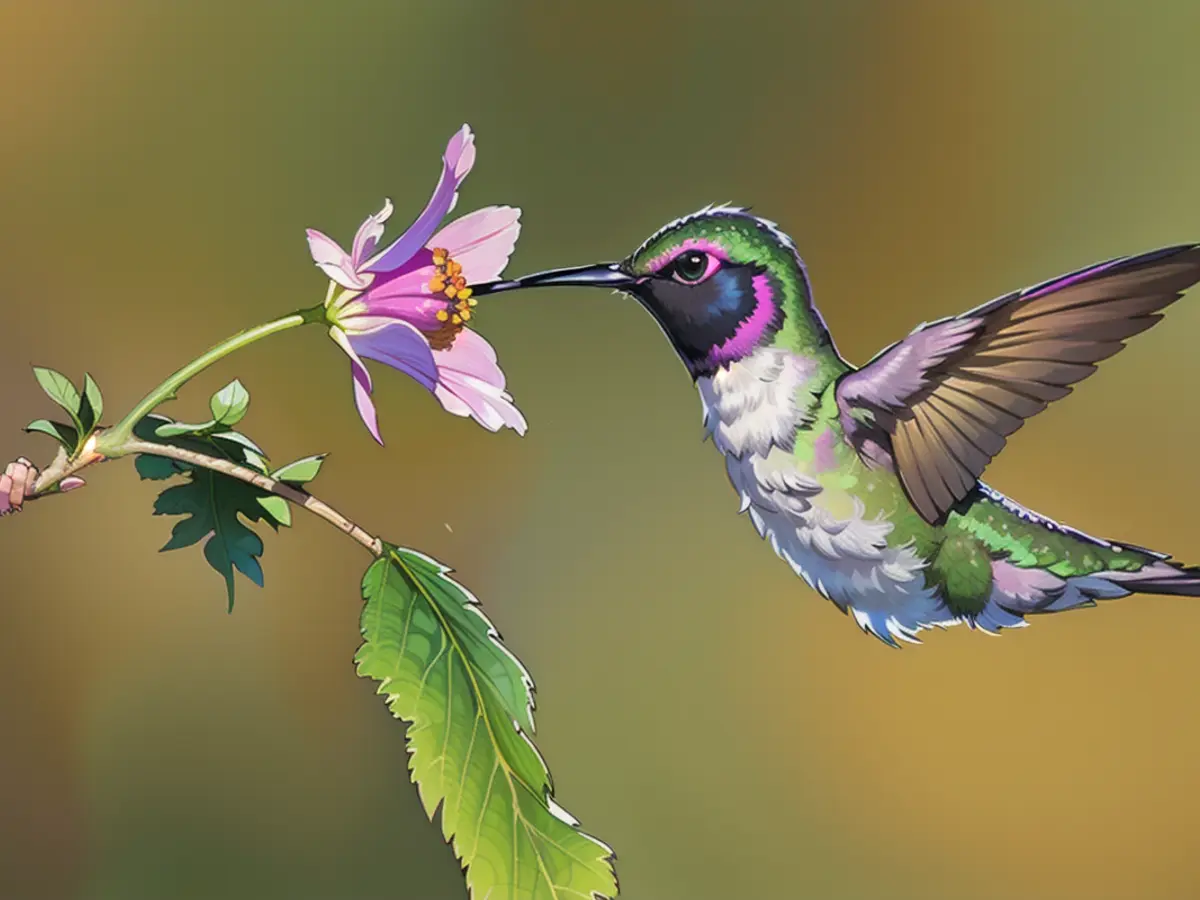The intricate flight control of hummingbirds.
Tiny birds known as hummingbirds possess special skills in their repertoire. With their long beaks, they can extract nectar from flowers while flying, although this often necessitates a bit of wing flapping. In a recent study, scientists describe this capability and its mechanisms.
The hummingbirds possess extraordinary flight control when extracting nectar from flowers, as they engage in frequent wing beats and guide their elongated beaks into floral corollas with remarkable accuracy. A group led by Duncan Leitch from the University of California, Los Angeles examines how these animals manage this complex process. The team measured the reaction of nerves and brain cells in Anna's hummingbirds (Calypte anna) to the slightest air currents.
It turns out that even the tiniest air currents at the feather tips prompt a corresponding response in the brain regions governing flight. The intensity of this air current changes based on proximity to an object. These minuscule movements at the feather tips trigger a signal from specialized receptors located in the wings.
The investigators identified a network of neurons in the wings that they believe conveys signals to the brain when activated by the tiniest of air currents. As a complementary discovery, they discovered significantly larger cell clusters in the brain that responded to stimulation at the wing edges - likely facilitating intricate flight modifications.
The legs of these birds also demonstrate exceptional sensitivity to air currents and forces inherent in flying. According to the researchers, the intensity of air pressure - influenced by proximity to an object - is detected by nerve cells at the base of the feathers and in the leg skin and sent to the brain, which gauges the orientation of the body relative to an object.
Spatial Awareness
Hummingbirds also possess a 3D body-map to guide their flight. The researchers propose that two nuclei in the forebrain are essential for this. One nucleus perceives touch on the head and face, while the other processes touch on the rest of the body. In facial zones, hummingbirds showed unparalleled sensitivity to the lightest of touches, according to the study in "Current Biology."
Zebra finches (Taeniopygia guttata), which were also scrutinized, exhibit a similar organization for the sensory pathway but some less efficient regions compared to hummingbirds. This implies that these areas contribute to the awe-inspiring flight maneuvers of hummingbirds. As mentions Leitch, "Our hummingbirds frequently reacted to the lightest touches we could give."
Neurophysiology of Interaction
Leitch and his collaborators observed neuron activation in real-time through electrodes implanted in hummingbirds and finches. By placing these electrodes and gently prodding the birds with wand sticks or air currents, they recorded real-time nerve activity as a response to tactile stimuli at different areas.
In related research, scientists at the University of California, Berkeley observed hummingbirds in a wind tunnel. They noted that an already high frequency of wing beats increased further when the hummingbirds flew backward - from 40 to 44 beats per second (in "Journal of Experimental Biology"). Some researchers even reported higher wing beat frequencies in hummingbirds.
*Main image: Flower and hummingbirds with nectar by Kevin Schloat [CC BY-ND 2.0]
*In-text image: Zoomed-in view of long hummingbird beak by Kevin Schloat [CC BY-ND 2.0]
Read also:
Despite their small size, hummingbirds exhibit remarkable brain activity in response to the smallest air currents encountered during flight. This behavioral research has revealed specialized receptors located in their wings and larger cell clusters in their brains that facilitate intricate flight modifications (Education, Brain).
Moreover, hummingbirds' exceptional flight skills extend beyond air current detection, with studies showing they possess 3D body-maps to guide their flight, a trait shared by other animals such as zebra finches, albeit with less efficiency (Behavioral research, Animals).







